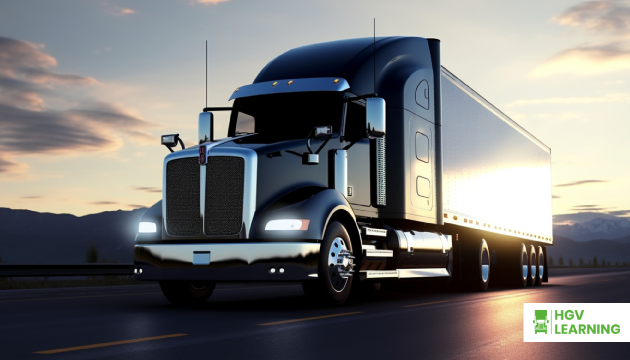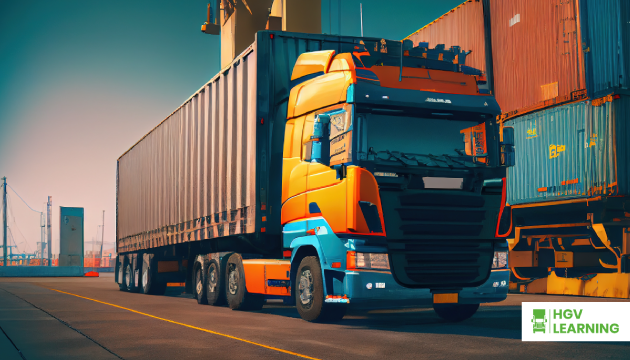Related Articles

21/10/2025
HGV Roadworthiness Checks: Staying Compliant Under DVSA’s 2025 Standards

15/10/2025

Operating a heavy goods vehicle safely involves more than just driving skill or routine maintenance. One of the most common compliance issues facing operators is overloading. When a vehicle exceeds its legal weight limit, it not only breaches regulations but also becomes unstable and unsafe. The Driver and Vehicle Standards Agency (DVSA) carries out regular roadside inspections to identify overloaded vehicles, and the penalties can be severe. From fines to prohibitions, overloading affects a company’s reputation and a driver’s legal standing. Understanding weight limits and proper loading practices is essential for anyone working in commercial transport.
Overloading occurs when a vehicle carries more weight than its legal limit allows. This may mean exceeding the vehicle’s gross weight or putting too much load on one or more axles. Even when the total weight seems within range, uneven distribution can still cause an offence. Overloading can also happen when operators fail to account for fuel, passengers, or equipment weight.
Every heavy goods vehicle has a manufacturer-assigned Gross Vehicle Weight (GVW), sometimes referred to as Maximum Authorised Mass (MAM). This figure, displayed on the vehicle’s identification plate, includes the combined weight of the vehicle, cargo, fuel, driver, and any passengers. Each axle also has its own limit, known as the axle weight rating. When too much weight is concentrated on one axle, it increases tyre wear, damages suspension components, and affects braking balance.
UK regulations specify clear weight limits depending on the vehicle’s design and number of axles. As a general guide, a two-axle rigid vehicle can legally weigh up to around eighteen tonnes, while a three-axle rigid can reach twenty-six tonnes. Heavier, multi-axle vehicles such as four-axle rigids can operate up to thirty-two tonnes, and articulated lorries with five or six axles can reach between forty and forty-four tonnes respectively.
These limits are outlined in UK Construction and Use Regulations and enforced by the DVSA. Drivers must never rely solely on estimated weights; the law requires accuracy. Before every journey, both drivers and loading staff must confirm the total and axle weights to ensure compliance.
The most reliable way to confirm compliance is by using a weighbridge or an on-board weighing system. Many logistics depots are equipped with weighbridges, but drivers can also use public facilities available across the UK. Portable weight sensors or air-pressure systems can provide accurate readings when a full weighbridge is not accessible. Drivers should always verify that their load documentation matches the readings before setting off. If the figures exceed the vehicle’s GVW or axle limits, adjustments must be made before departure.
An overloaded HGV is more difficult to control, particularly during braking and cornering. The excess weight increases stopping distances, puts pressure on suspension and braking systems, and can cause structural fatigue. Tyres wear faster and are more likely to fail, while braking systems can overheat. The vehicle’s centre of gravity also changes, increasing the risk of rollovers or load shifts.
Overloading doesn’t just threaten safety; it also leads to costly downtime and higher maintenance expenses. Over time, the extra strain can shorten component lifespan and raise operating costs across the fleet.
The DVSA, alongside local police, operates roadside checks and weighbridge stations across the country. Vehicles found to be overweight can be issued with immediate prohibition notices, preventing them from continuing their journey until the excess weight is removed.
Fines are scaled according to how much the vehicle exceeds the limit. Small excesses may result in warnings, while higher percentages often lead to fixed penalties or court prosecution. Severe cases, where the vehicle is significantly overloaded, can result in the operator’s licence being reviewed. Each incident also affects the Operator Compliance Risk Score (OCRS), increasing the likelihood of future inspections.
Routine use of weighbridges is the simplest way to avoid accidental overloading. Vehicles should be weighed both after loading and before departure, especially if cargo varies in weight or distribution. Public weighbridges are widely available, and operators should make regular checks part of their standard procedure.
Modern vehicles are often fitted with load sensors that monitor weight distribution and send alerts when a limit is approached. These systems can help drivers make small adjustments before the journey begins, improving safety and compliance.
Knowledge and training are essential for preventing overloading incidents. Drivers should be able to interpret vehicle weight plates, understand gross and axle limits, and verify information from delivery notes. Training courses such as CPC Training include modules on safe loading and legal compliance, ensuring drivers understand their responsibilities before taking to the road.
Specialist qualifications such as Hiab Training provide additional guidance for operators using cranes or handling heavy materials. They cover load positioning, stability, and safe operation under variable weights, skills that reduce the risk of unbalanced or excessive loads.
Preventing overloading requires cooperation between drivers, loading teams, and fleet managers. Operators should maintain written loading policies and provide refresher sessions to reinforce safe practices. Modern telematics systems can track vehicle weights and detect patterns that indicate recurring problems.
When combined with professional instruction from HGV Training and ongoing compliance reviews, these tools help businesses reduce risk, protect assets, and maintain a strong safety record.
Overloading prevention depends on more than just technology; it relies on awareness and accountability. Companies that promote a safety-first culture often see fewer breakdowns, reduced maintenance costs, and improved driver confidence. Making compliance part of a daily routine ensures vehicles operate safely and legally, protecting both drivers and the public.
HGV overloading is more than a technical mistake; it is a serious safety issue that can lead to fines, prohibitions, and increased accident risk. By understanding weight limits, using weighbridges correctly, and ensuring every member of the transport team is trained and alert, operators can stay compliant and protect their vehicles. Regular checks, accurate documentation, and responsible loading all contribute to a safer, more efficient haulage industry.

21/10/2025

15/10/2025
Complete the form below and we’ll contact you asap.

